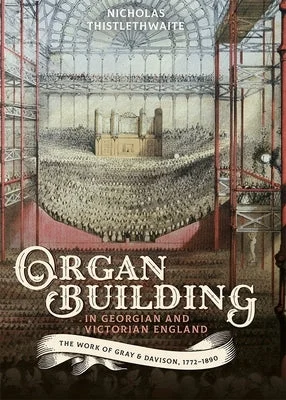
Solid Wood Clarinets with Ebony Mouthpieces for Jazz and Classical MusiciansOrgan-Building in Georgian and Victorian England: The Work of Gray & Davison, 1772-1890
Qty:
In the early 1840s, with the marriage of John Gray's daughter to Frederick Davison - a member of the circle of Bach-enthusiasts around the composer Samuel Wesley - the firm became 'Gray & Davison'. Davison was a progressive figure who reformed workshop practices, commissioned a purpose-built organ factory in Euston Road and opened a branch workshop in Liverpool to exploit the booming market for church organs in Lancashire and the north-west. Under Davison's management, the firm was responsible for significant mechanical and musical innovations, especially in the design of concert organs. Instruments such as those built in the 1850s for Glasgow City Hall, the Crystal Palace and Leeds Town Hall were heavily influenced by contemporary French practice; they were designed to perform a repertoire dominated by orchestral transcriptions. Many of the instruments made by the firm have been lost or altered; but the surviving organs in St Anne, Limehouse (1851), Usk Parish Church (1861) and Clumber Chapel (1889) testify to the quality and importance of Gray & Davison's work.
This book charts the firm's history from its foundation in 1772 to Frederick Davison's death in 1889. At the same time, it describes changes in musical taste and liturgical use and explores such topics as provincial music festivals, the town hall organ, domestic music-making and popular entertainment, the building of churches and the impact on church music of the Evangelical and Tractarian movements. It will appeal to organ aficionados interested in the evolution of the English organ in the later Georgian and Victorian eras, as well as other music scholars and cultural historians.
Author:
Publisher: Boydell Press
Published: 02/21/2020
Pages: 577
Binding Type: Hardcover
Weight: 2.40lbs
Size: 9.40h x 6.10w x 1.30d
ISBN13: 9781783274673
ISBN10: 1783274670
BISAC Categories:
- |
- |
- |
